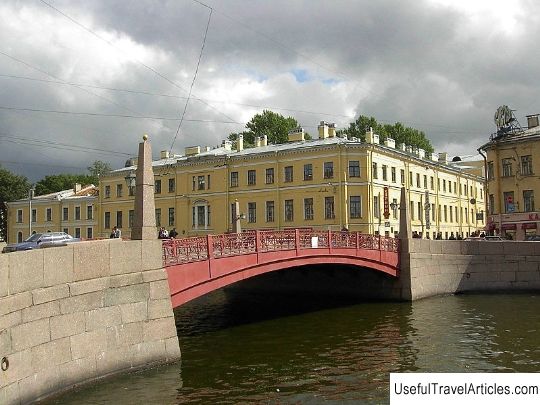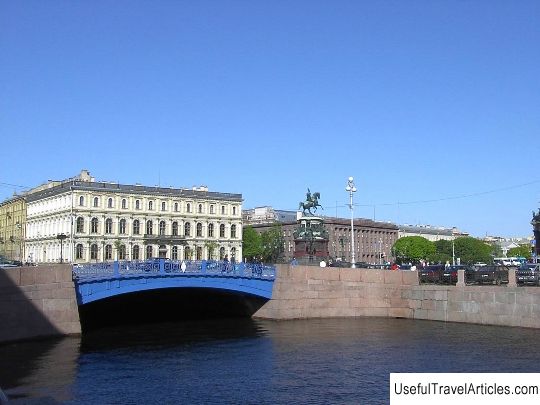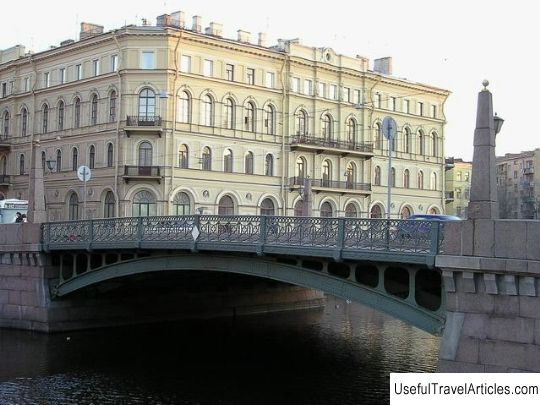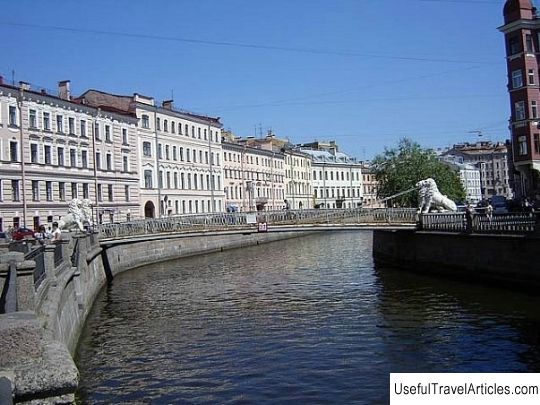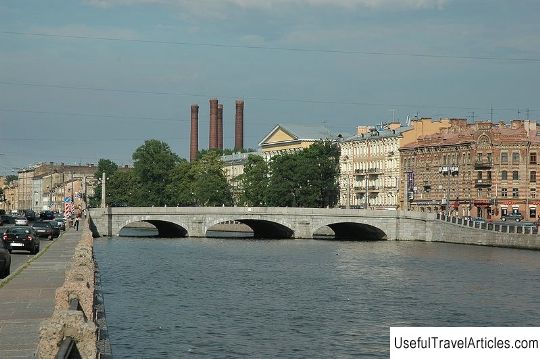Pevcheskiy Most description and photo - Russia - Saint Petersburg: Saint Petersburg
Rating: 8,0/10 (489 votes) 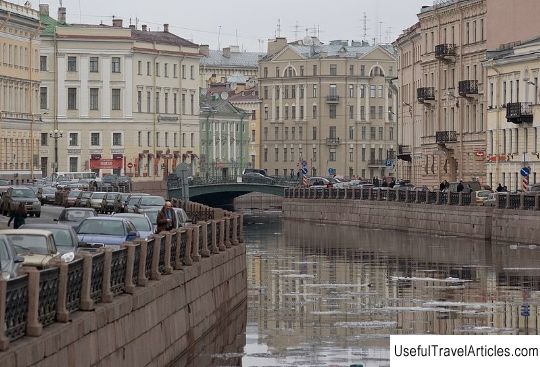
Pevchesky bridge description and photos - Russia - Saint Petersburg: Saint Petersburg. Detailed information about the attraction. Description, photos and a map showing the nearest significant objects. Photo and descriptionPevchesky bridge is a striking representative of square bridges that are very common in the historical center of St. Petersburg. The Pevchesky Bridge crosses the Moika and, as it were, continues the Palace Square, connecting the 2nd Admiralteisky and Kazan Islands. It is an object of cultural heritage of the Russian Federation. Pevchesky Bridge is the fourth widest bridge in St. Petersburg (after Kazansky, Aptekarsky and Blue). The width of the bridge is 72 meters, and the width is 24 meters. The first bridge on this site was built of wood in 1834 according to the design of Montferrand. Its main purpose is the passage to the Palace Square of the troops that participated in the parade at the opening of the Alexander Column. The bridge's railings were originally painted yellow. That is why this bridge was originally called Yellow. In 1839-1840. at the end of the Palace Square ensemble, a new arched, cast-iron bridge in one span was built instead of a wooden bridge, designed by engineer Adam E.A. on the initiative of Finance Minister Kankrin. During the construction of the bridge, communication between the banks of the river was carried out using a boat crossing. The superstructure of the new bridge was a cast-iron arch, which consisted of 329 wedge-shaped boxes-caissons, which were connected with bolts. It was the bolted joints of the structures that after some time turned out to be the most vulnerable elements of the structure: a year after the bridge was put into operation, about 27 nuts and 50 bolts were plundered, which the townspeople twisted for domestic use. A brick vault was installed on top of the cast-iron arch, piles - made of wood, on them are installed rubble masonry supports, faced with pink granite. The roadway of the structure was covered with gray-pink quartzite-sandstone, mined on Lake Onega (Brusninskoye deposit). The railings were cast openwork gratings made of cast iron. The lattice of the bridge is a unique artistic casting, reminiscent of the finest work of lace with a pattern in the form of a fan. The main element of the pattern is the repeating palmettes. The grand opening of the bridge took place on November 24, 1840. Emperor Nicholas I himself was the first to experience it, having passed it in a carriage and opening the crossing for traffic and pedestrians. Together with its new appearance, the bridge received a new name. Now it began to be called the Singing. This name comes from the fact that the bridge directly rested against the gates of the court Singing Chapel, which was the center of the musical culture of the capital. It is said that the place for this bridge was chosen by Nicholas I. The legend says: earlier on the Moika Embankment, 24, there lived a count Golovkin Yuri Alexandrovich, who was related to the family of the emperor. Once, when the count was invited to a royal dinner at the Winter Palace, he was in such a hurry that, getting into the boat, he stumbled and fell into the water. In this regard, the count had to return home. The emperor, without waiting for Golovkin for dinner, came to him himself. The very next day, after what happened, Nicholas I and his wife again visited a relative. During the visit, the sovereign proposed to build a bridge here to prevent such cases on the water. In 1937 The cobblestones of the Pevchesky Bridge roadway were covered with a layer of asphalt. In 2003, due to the unsatisfactory condition of the bridge, the specialists of the Intarsia and Lenmostostroy companies began its complete reconstruction. For the first time in its history, the bridge has undergone a fairly serious major overhaul. The waterproofing of the arch of the bridge and bolted connections were broken, the foundations and vaults of the arches were significantly deformed, and cracks appeared in the cast-iron blocks. During the reconstruction, with the help of bored piles, the supports of the bridge were strengthened, the geometry of the vault was leveled, the blocks of the cast-iron arch vault were repaired, and the lost cast-iron elements of the facades were also restored. Due to the powerful reinforced concrete superstructure, which was arranged on top of the cast-iron vault, the carrying capacity of the bridge was increased. A new roadway was completed.       We also recommend reading Church of St. John the Theologian description and photos - Russia - Siberia: Barnaul Topic: Pevcheskiy Most description and photo - Russia - Saint Petersburg: Saint Petersburg. |
